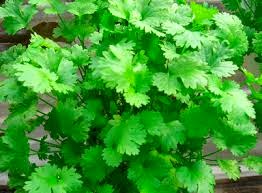Coriander leaves and seeds
Coriander ( also known as Cilantro) plant has amazing medical properties . Due to the presence of a multitude of bioactives, wide range of pharmacological activities have been ascribed to this herb. The multipurpose uses of this plant and seeds are listed below for the benefit of the readers.
Coriander leaves:
1. The leaves, ground as paste after adding required water, is best used to remove the wrinkles on the skin when applied. It also removes the dark rings around the eyes. Two drops of this paste into the eyes remove the redness . It also balances the ocular pressure in the eyes.
Coriander Seeds: ( Tea)
Three teaspoons full of coriander seeds are added to boiling water and allowed to boil for 5 minutes. Add small amount of ginger along with it. Add milk and sugar to this and filter it in a container. The aromatic tea is delicious to drink and has the following medical benefits.
a. Removes Gas from the Stomach.
b. Increases digestive functions by activating the digestive glands and energizes the liver and pancreas functions.
c. It is an instant remedy for diarrhea. A cup of this tea, also boiled with leaves, gives an instant relief to diarrhea by setting up digestive tract functioning.
d. It controls blood sugar and diabetic conditions.
e. It has anti-inflammatory properties.
f. The paste is good for treating Gout and Rhematoid Arthritis.
g. Essential oils in Coriandrum Sativum have the properties of an antiseptic,antimicrobial and heals mouth ulcers. The citronelol component helps cure wounds in mouth and gives fresh breath.
h. In case of blocked nose, the coriander leaves are put in boiled water and when inhaled, its fumes relieves blocked nose and acts as good expectorant for children.
i. It is a very good appetizing agent. It stimulates and activates the digestive tract glands and liver.


